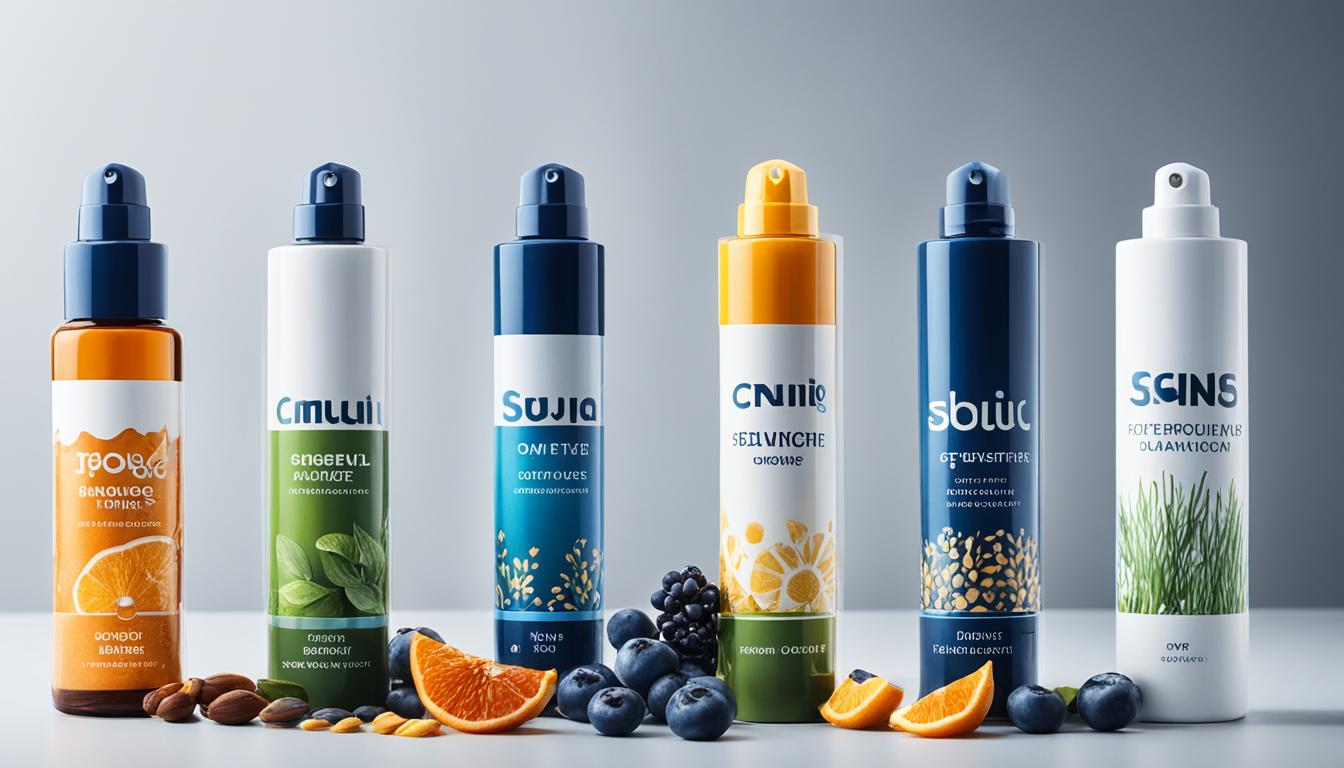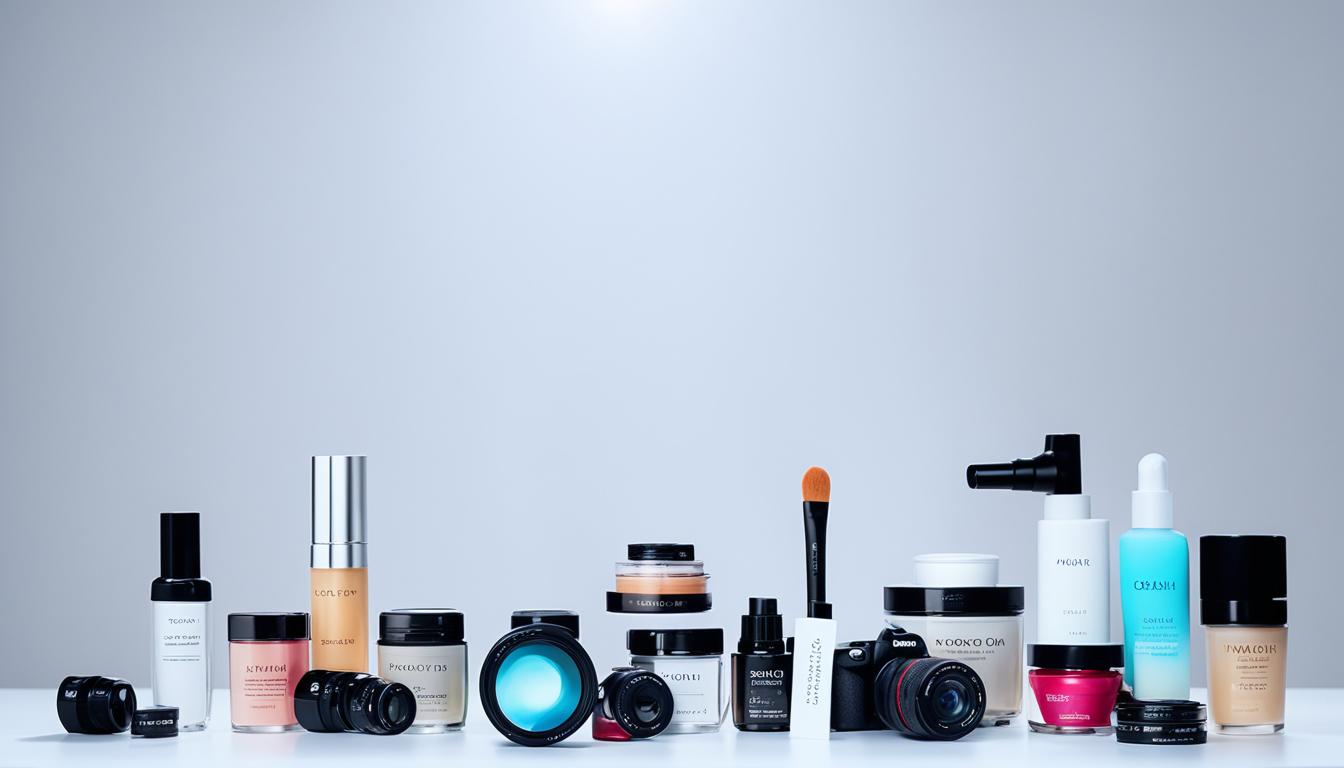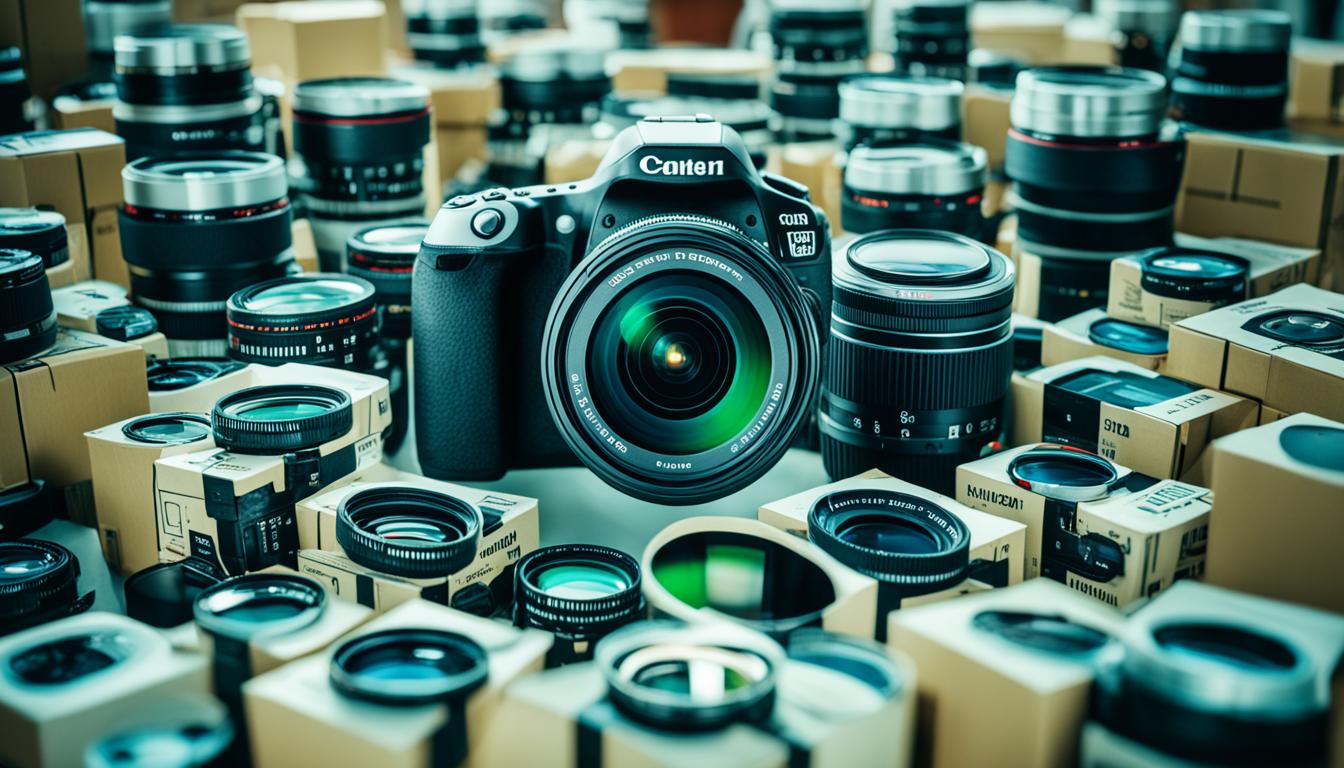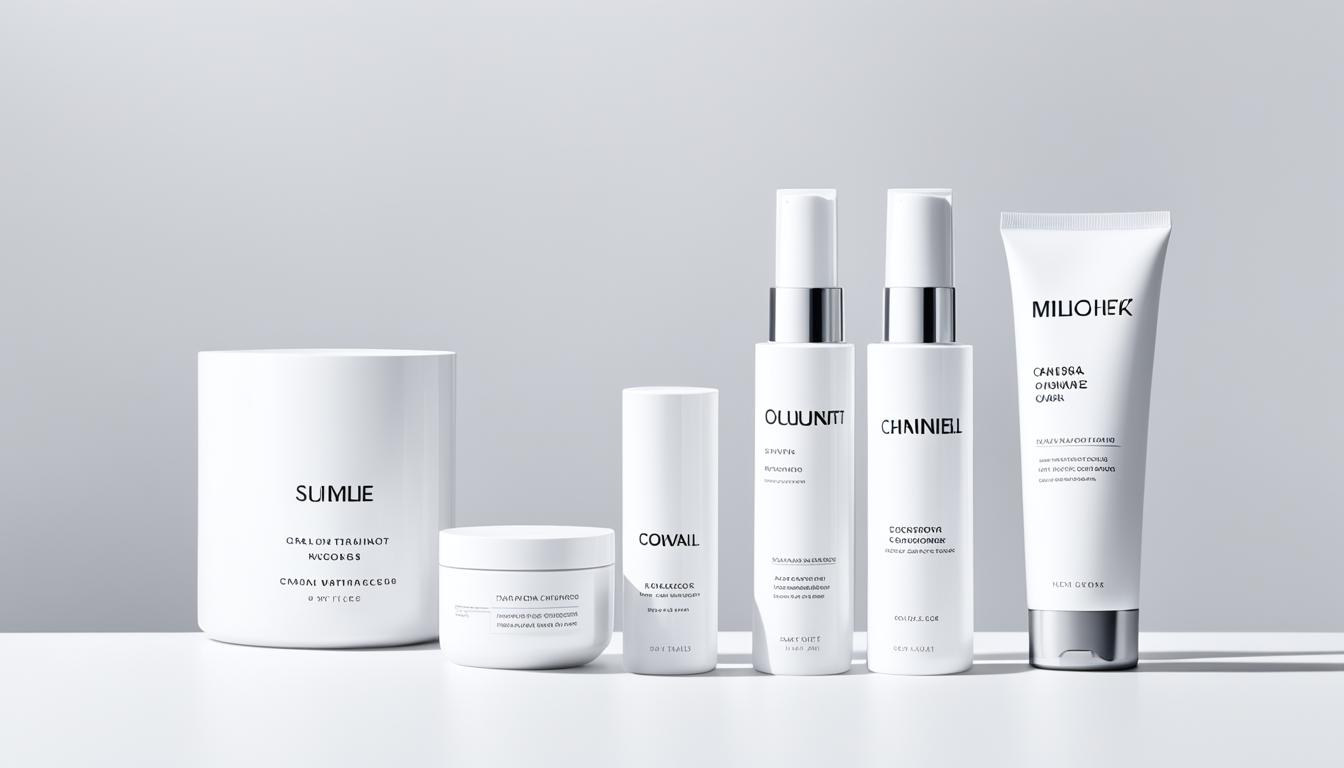Product photography is an essential aspect of promoting and selling products online. With the right techniques, you can capture the essence of any item and create compelling images that attract customers. In this article, we will provide expert tips and techniques for photographing different types of products. These techniques will help you elevate your imagery and improve the visual appeal of your products, leading to increased sales.
Whether you’re a beginner or a seasoned professional, mastering the art of product photography requires attention to detail, creativity, and the right equipment. From lighting and composition to post-processing and platform-specific requirements, we’ve got you covered.
Key Takeaways
- Techniques for photographing different types of products can greatly enhance the visual appeal of your merchandise.
- Lighting, composition, and camera equipment play a crucial role in capturing high-quality product photos.
- Understanding the specific requirements of different platforms like Instagram can help you optimize your product photography for maximum exposure.
- Editing is an essential step in enhancing the quality and aesthetics of your product photos.
- By following these expert tips and techniques, you can create compelling images that attract customers and drive sales.
Product Photography Tips for Beginners
If you are new to product photography, we’ve got you covered with some valuable tips to guide you through the process. Mastering the art of capturing stunning product images is essential for showcasing your products and boosting sales.
1. Lighting for Product Photography
Understanding the importance of lighting is crucial in product photography. Whether you’re using natural light or artificial lighting setups, the right lighting can make a significant difference in the final result. Properly lit products highlight their features and textures, creating visually appealing images.
2. Tripod for Product Photography
Investing in a sturdy tripod is a game-changer for product photography. It helps stabilize your camera and eliminates unwanted blurriness caused by hand movements or low light conditions. A tripod allows you to capture sharp, professional-looking images with ease.
3. Shooting for the Edit
When photographing products, aim to capture images that require minimal editing. By paying attention to details during the photoshoot, such as proper exposure and composition, you can reduce the amount of time spent editing later. Shooting for the edit saves you time and ensures the authenticity of your products.
4. Photo Editing for Product Photography
Basic photo editing skills can take your product photographs to the next level. Learn how to adjust brightness and contrast, fine-tune colors, and enhance the overall image quality. Software like Adobe Photoshop or Lightroom offers powerful tools for editing and refining your product photos.
“Invest in good lighting equipment and don’t underestimate the power of editing software. These two factors can transform your product photography and make your items shine.” – Sarah Miller, Professional Product Photographer
Remember, product photography is a skill that develops with practice. By implementing these tips, you’ll be on your way to creating stunning images that capture your products’ essence and attract customers.
Product Photography Tips for Instagram
Instagram has become a prominent platform for showcasing products, captivating audiences, and driving sales. To maximize the impact of your product photography on Instagram, we have curated a set of valuable tips and techniques that will elevate your photographs and help you stand out from the competition.
Seek Inspiration from Leading Brands
When it comes to product photography, it’s essential to draw inspiration from brands that have successfully mastered the art. Follow influential brands in your industry and observe their composition, lighting, and styling choices. Adapt these techniques to suit your own products and create visually compelling images that speak to your target audience.
Embrace the Rule of Thirds
A key composition principle in photography is the rule of thirds. By dividing your image into a 3×3 grid, you can strategically position your subject along the gridlines or intersections. This creates a balanced and visually pleasing composition that draws the viewer’s attention to the main focal point. Experiment with different placements within the grid to find the most captivating arrangement for your product.
Use Simple Props to Enhance Aesthetics
Props can add an extra layer of visual interest and elevate the overall aesthetics of your product photography. However, it’s crucial to use props that complement your product without overpowering it. Opt for simple, minimalistic props that enhance the story or ambiance you want to convey. Remember, the main focus should always be on your product.

Capture Multiple Shots from Different Angles
Showcasing your product from various angles provides your audience with a comprehensive view and allows you to highlight different features. Experiment with different perspectives, close-ups, and wide shots to create a dynamic and engaging collection of images. This approach also provides you with more options during the editing process, ensuring you have the perfect shot to captivate your audience.
By incorporating these product photography tips for Instagram into your creative process, you’ll be able to produce captivating visuals that resonate with your audience and drive engagement. Remember to continually experiment and refine your techniques to stay ahead in the ever-evolving world of Instagram marketing.
Creating High-Quality Product Photos
When it comes to product photography, capturing high-quality images is essential to showcase the product’s details and attract potential customers. To accomplish this, there are several key elements to consider, including choosing the right equipment, styling the product, and carefully adjusting lighting and camera settings.
Choosing the Right Equipment
Investing in the right equipment is crucial for creating exceptional product photos. Here are some essential tools to consider:
- Cameras for Product Photography: Opt for a camera that allows manual control over settings and has good image quality. DSLR and mirrorless cameras are popular choices.
- Lenses for Product Photography: Choose lenses that suit your desired focal length and allow you to capture the product’s details effectively. Macro lenses are particularly suitable for close-up shots.
- Tripods and Shutter Releases: Using a tripod helps keep your camera steady and avoids any unwanted blurriness. Shutter releases further minimize camera shake, ensuring sharp images.
Styling the Product
Styling the product is an essential step in product photography to make it visually appealing and highlight its best features. Consider the following tips:
- Remove Imperfections: Clean the product thoroughly to remove any dust, fingerprints, or blemishes before photographing it. Ensure surfaces are polished and any labels or stickers are correctly aligned.
- Enhance Visual Appeal: Use props, textures, or backgrounds that complement the product and create an attractive composition. Consider the product’s target audience and the desired aesthetic.
Product Photography Lighting and Camera Settings
Lighting and camera settings significantly impact the overall quality and mood of product photos. Here are some considerations:
- Lighting: Whether using natural or artificial light, ensure it is diffused and evenly illuminates the product. Avoid harsh shadows or glare that can detract from the product’s details.
- Camera Settings: Use a narrow aperture (higher f-stop value) to increase the depth of field and capture more of the product in focus. Adjust the ISO and shutter speed based on the available light to avoid noise or blurriness.
By paying attention to these factors and continuously refining your techniques, you can create high-quality product photos that accurately represent the product and capture the attention of potential customers.
Editing Your Product Photos
After completing the photoshoot, the next crucial step in perfecting your product images is the editing process. With the right editing techniques, you can enhance the quality and visual appeal of your photos, making your products stand out from the competition. In this section, we will explore various editing methods and discuss the importance of photo management software for streamlining your workflow.
Simplify Editing with Photo Management Software
Managing and editing multiple product photos can be time-consuming and challenging without the right tools. That’s where photo management software comes in. One popular choice among photographers is Adobe Photoshop Lightroom. This comprehensive software offers a range of editing features and allows for easy organization, making it an essential tool for your editing workflow. By efficiently managing your photos in Lightroom, you can save time and focus on the creative editing process.

Adjusting Brightness, Exposure, and White Balance
When editing product photos, it’s essential to fine-tune the brightness, exposure, and white balance to achieve the desired look. Adjusting the brightness can help enhance details and make your products more visually appealing. Proper exposure ensures that the lighting in your photos accurately represents the product. Additionally, adjusting the white balance is crucial for achieving accurate colors and eliminating any unwanted color casts.
Enhancing Contrast, Highlights, and Shadows
Another vital aspect of editing product photos is enhancing contrast, highlights, and shadows. By adjusting the contrast, you can improve the overall depth and definition in your images. Highlights and shadows control the brightness levels in specific areas, allowing you to bring out details or create a more dramatic effect. These adjustments add dimension and visual interest to your product photos.
TIP: When editing contrast, highlights, and shadows, it’s important to strike the right balance. Avoid excessive editing that may result in unrealistic or unnatural-looking images.
| Editing Options | Description |
|---|---|
| Brightness | Adjust the overall brightness level of the image. |
| Exposure | Control the amount of light in the image. |
| White Balance | Correct the color temperature and remove unwanted color casts. |
| Contrast | Enhance the difference between light and dark areas in the image. |
| Highlights | Adjust the brightness of the brightest areas in the image. |
| Shadows | Control the darkness of the darkest areas in the image. |
By utilizing these editing options, you can transform your product photos from ordinary to extraordinary, ensuring they capture the attention of potential customers and effectively showcase your products.
Conclusion
Creating high-quality product photos is a skill that requires a combination of technical expertise, creativity, and attention to detail. By following the expert tips and techniques outlined in this article, you can elevate your product photography and capture compelling images that attract customers.
One key aspect to consider is lighting. Whether you choose natural light or artificial light sources, understanding how to manipulate and harness light can greatly impact the final result. Additionally, composition plays a crucial role in creating visually appealing images. By carefully arranging your product and considering the rule of thirds, you can achieve a well-balanced and aesthetically pleasing composition.
Editing is another essential step in the product photography process. By mastering basic photo editing techniques, you can enhance your photos and ensure they stand out from the competition. Adjusting brightness and exposure, fine-tuning white balance, and optimizing contrast, highlights, and shadows can all make a significant difference in the final image.
Lastly, it’s vital to remember the specific requirements of different platforms, such as Instagram. Each platform has its own guidelines and audience expectations. By tailoring your product photography to meet these requirements, you can maximize engagement and reach a wider audience.
Capturing high-quality product photos is an ongoing journey of practice and continuous improvement. With time, patience, and a commitment to honing your skills, you can master the art of photographing different types of products and enhance the visual appeal of your business. So grab your camera, get creative, and start capturing stunning product images that will leave a lasting impression on potential customers.
FAQ
What are some tips for photographing products?
Some tips for photographing products include using proper lighting, using a tripod, shooting with minimal editing in mind, and learning basic photo editing skills.
How can I make the most of my product photography on Instagram?
To make the most of your product photography on Instagram, you can take inspiration from brands you love, use the rule of thirds for composition, use simple props, and take multiple shots from different angles.
What equipment do I need for creating high-quality product photos?
For creating high-quality product photos, you may need a camera and appropriate lenses, tripod, shutter release, and other styling tools. Lighting and camera settings also play a crucial role in capturing the product effectively.
How can I enhance my product photos through editing?
You can enhance your product photos through editing by using photo management software, adjusting brightness and exposure, white balance, and utilizing various editing options like contrast, highlights, and shadows.
What is the importance of product photography in promoting and selling products online?
Product photography is essential in promoting and selling products online as it helps capture the details and visual appeal of the products, attracting customers and leading to increased sales.
What are some general tips for beginners in product photography?
Some general tips for beginners in product photography include understanding the importance of lighting, using a tripod, shooting with minimal editing in mind, and learning basic photo editing skills.
How can I make my product photography more appealing on Instagram?
To make your product photography more appealing on Instagram, you can take inspiration from your favorite brands, utilize the rule of thirds for composition, incorporate simple props, and capture multiple shots from different angles.
What equipment should I consider for creating high-quality product photos?
To create high-quality product photos, you should consider using a camera, appropriate lenses, a tripod, a shutter release, and other styling tools. Additionally, paying attention to lighting and camera settings is crucial for capturing the product effectively.
How can I improve the quality of my product photos through editing?
You can improve the quality of your product photos through editing by using photo management software like Adobe Photoshop Lightroom, adjusting brightness and exposure, white balance, and utilizing various editing options such as contrast, highlights, and shadows.
What is the role of product photography in online promotion and sales?
Product photography plays a significant role in online promotion and sales by capturing the details and visual appeal of products, attracting customers and ultimately leading to increased sales.
What are some essential tips for beginners in product photography?
Essential tips for beginners in product photography include understanding the importance of lighting, using a tripod, shooting with minimal editing in mind, and acquiring basic photo editing skills.
How can using human models enhance product photography techniques?
Utilizing model usage in photography can elevate product photography by adding a human element to the shot. Incorporating live models can help showcase the product in real-life situations, adding depth and relatability to the images. This human touch can enhance the overall quality and appeal of the product photos.




